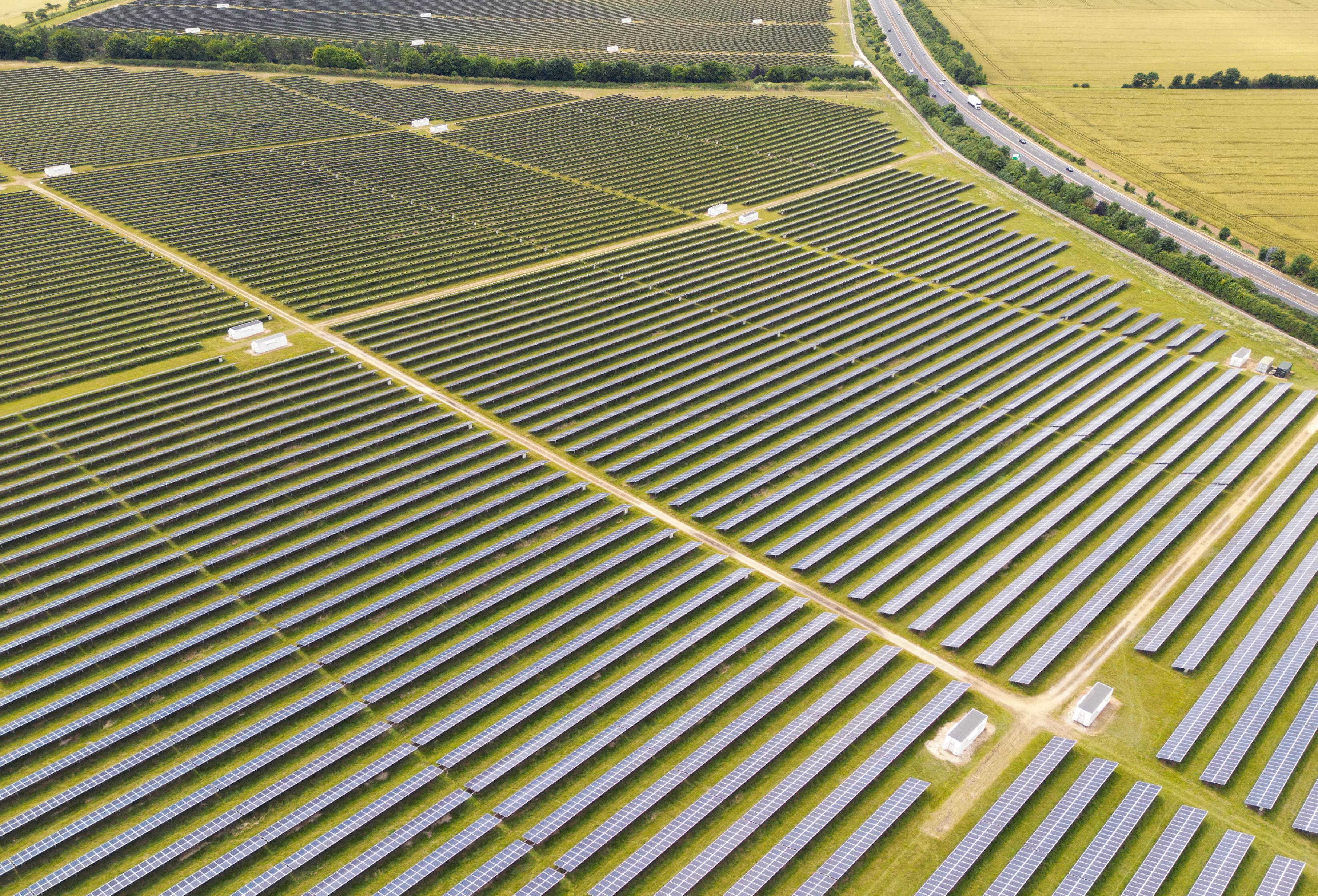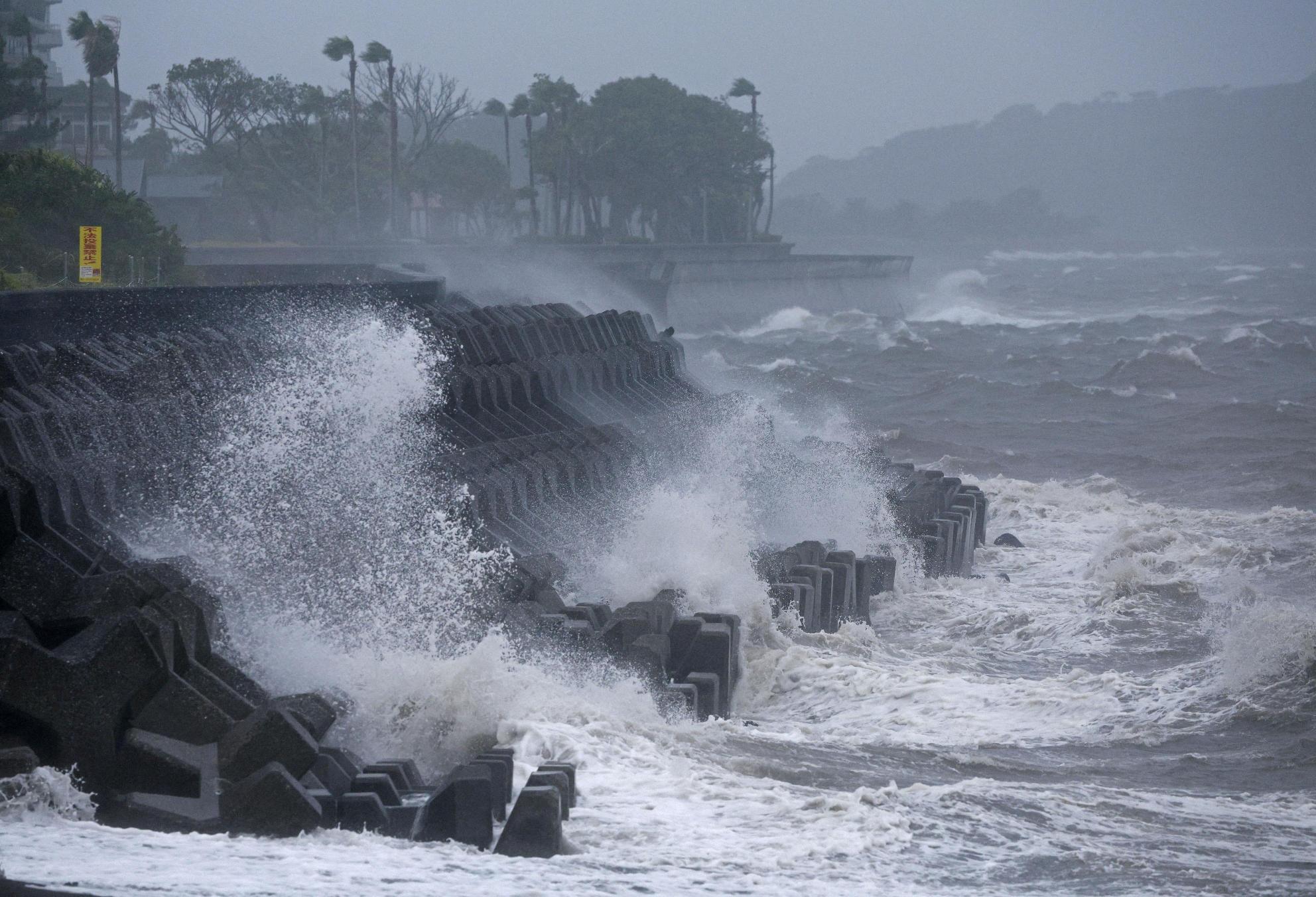
2024-08-29 01:22
SYDNEY, Aug 29 (Reuters) - New Zealand's business confidence jumped in August to the highest level in a decade as forward-looking activity indicators rose strongly, an ANZ Bank survey showed on Thursday. The survey's headline measure showed a net 50.6% of respondents expected the economy to improve over the year ahead, versus a 27.1% optimism level in the previous poll in July. A net 37.1% of respondents expected their own businesses to grow in the next 12 months, a seven-year high, versus 16.3% last month. "Things are looking up, albeit from a pretty dark place for many firms," ANZ Chief Economist Sharon Zollner said in a statement. Sign up here. https://www.reuters.com/world/asia-pacific/new-zealand-business-confidence-soars-august-anz-survey-shows-2024-08-29/

2024-08-29 01:00
LONDON, Aug 28 (Reuters) - The future of ring trading on the London Metal Exchange looks assured for now after almost all the firms involved told Reuters they remained committed to open-outcry trading at one of the last venues to still support it. But with critical mass dropping towards the level at which LME management has said it would suspend the process after Societe Generale said last week it would no longer take part, its longer term outlook is less sure. The ring has its roots in the early 19th century when the Royal Exchange, the world’s first commodities market, became so crowded that metal merchants gathered at the Jerusalem coffee house on Cornhill in the City to conduct business. In the 1980s, about 30 firms dealt in the LME ring, which features a circle of padded red leather seats for traders who use arcane hand signals during five-minute bursts of intense trading in copper, aluminium and other metals. Now, just seven participants remain, and the LME has said the floor will close if the number of ring members falls below six, or if their trading in the second ring falls to less than 75% of last year's level. The LME, owned by Hong Kong Exchanges and Clearing Ltd (0388.HK) , opens new tab, said on Friday that trading volumes remain above the 75% threshold, but did not say by how much. It declined to comment further. Several sources said high costs for ring-dealing firms and a global trend towards electronic trade threaten to undermine the minimum number of participants required to keep the age-old trading method afloat. The loss of the ring, which involves four sessions of trading a day, would be a blow for miners and industrial firms that value floor trading. They regard open-outcry dealing, used to crystalise official prices for physical deals using a complex structure of multiple forward dates, as absent of speculative influences. For years, there has been tension between traditional physical users and the financial community that includes hedge funds, speculators and Commodity Trade Advisor investment funds and funds driven by algorithmic programmes. Many long-standing users see a risk too that an excess of computer-driven speculative flows can distort prices that are key to deals in physical metal. "It's that second ring close, the official price, that's void of algos, void of CTAs, void of specs, that still has an appeal," said Marc Bailey, CEO of ring-trader Sucden Financial. QUESTIONS OVER VIABILITY An outcry from physical LME users saved the ring three years ago when the 147-year-old LME proposed to close the trading floor and join the bulk of other financial exchanges that have moved to pure electronic trading. The exchange argued that a temporary switch to full digital trading during COVID-19 proved that the ring was not essential. But the LME eventually compromised and now operates on a hybrid basis, using open-outcry trading for official prices used by physical users as benchmarks for their deals and an electronic system for closing prices. Longstanding questions about the viability of the ring resurfaced on Aug. 23 when Societe Generale (SOGN.PA) , opens new tab said it would drop the top-tier membership that allows floor trading. A Reuters survey showed there is still a commitment to the ring for now by the bulk of existing ring members, backed by miners and companies that use physical metal. "There are enough people that still want an independent price for physical trading," said Sucden's Bailey. Marex Group also said it would continue ring trading, while StoneX Financial (SNEX.O) , opens new tab said it had no current plans to change its approach to the ring. Sources with direct knowledge said Amalgamated Metal Trading, CCBI Global Markets and GF Financial also planned to continue on the LME floor, while Sigma Broking declined to comment. Ring members must bear the extra cost of having traders both in the office and on the LME floor, which can cost $1 million a year, one industry source estimated. "It's expensive to maintain, but we're still making money from the ring," said an executive of a ring dealer who declined to be named. SMALL PLAYER SocGen was a relatively small player in the ring, and one LME executive estimated the company accounted for only 6% of open-outcry trading. An executive at an LME ring dealer said they expected its ring business to be redistributed to one or more of the remaining brokers. Some LME members argue that electronic trading worked during COVID-19 and a full shift is inevitable. "The writing is in the wall," said an industry source. "The ring is actually irrelevant, as those prices were compiled electronically during COVID and no one noticed any difference." But the ring still has support. One executive at a European company that buys LME metals to make its products said the exchange should create a more viable ring by coming up with more cost-efficient solution. "Without the ring, the LME is just another raw materials exchange," he said. Sign up here. https://www.reuters.com/markets/commodities/lme-open-outcry-trade-lives-socgen-quit-sparks-no-rush-exits-2024-08-28/

2024-08-29 01:00
LONDON, Aug 28 (Reuters) - China has boosted domestic coal production and imports to record highs, even as surging power from hydro dams and solar farms has trimmed thermal generation during the summer heatwave. Coal-fired generation remains critical to ensuring the reliability of electricity supplies - especially in the winter, when hydro and solar output is much lower and the system depends far more heavily on fossil energy. Despite a record deployment of wind and solar resources, coal still provides the largest share of generation at all times of year, rising to more than 75% in the winter months. Sufficient stocks are therefore critical to ensure thermal generators have enough fuel on hand to run flat out in the coldest part of winter. Generators are accumulating inventories to lay in adequate fuel and avoid a repeat of power shortages that plagued the country in the autumn and winter of 2021. COAL SUPPLIES China's mines boosted production to a seasonal record 390 million tonnes in July 2024, up from 378 million in the same month a year earlier and 373 million in 2022. Domestic miners have ramped up output over the summer to make up for relatively slow production in the first five months of the year. Cumulative production in the year to July was just 15 million tonnes behind the same period a year earlier but the deficit had fallen from 54 million tonnes in the year to May. So far in 2024, Inner Mongolia, Shaanxi and Xinjiang, three of the four top provincial-level producers, have all reported record seasonal output. Only Shanxi, where production is broadly flat compared with a year earlier, failed to set a seasonal record in the first seven months. Shanxi has "voluntarily" adjusted output after seven years of rapid growth to optimise capacity and increase the proportion of advanced mines, according to the government-run news agency Xinhua. Chartbook: China electricity generation , opens new tab The four top producers account for more than 80% of the country’s output and are the critical suppliers to generators in all regions, except in the far south. At the same time, imports surged to a seasonal record of 296 million tonnes in the first seven months from 261 million tonnes in 2023 and 139 million in 2022. Imports have been used as a substitute for the lower output from Shanxi, creating breathing space to restructure the sector. But they are also crucial in Guangdong and other southern areas, since it is cheaper to bring coal in by sea than on long rail journeys from the far north. DOUBLE PEAK China's annual electricity consumption exhibits what the government terms a "double peak" in summer and winter. The primary peak occurs between June and August, driven by airconditioning and refrigeration, which accounts for 30% of maximum nationwide load, rising to more than 40% in some provinces. But summer is also when precipitation is highest because of the East Asian monsoon and hydro generation is maximised, easing some of the strain of the transmission network, except in drought years. In July 2024, record output from hydro and solar parks trimmed thermal generation, mostly from coal, by 25 billion kilowatt-hours (kWh) compared with a year earlier, the first seasonal decline for at least a decade. But the secondary peak occurs between December and February, driven by heating and lighting, not much lower than in the summer. Winter coincides with the dry season, when hydro generation declines sharply, typically by around 50% compared with the summer. Solar generation is also somewhat less, given shorter daylight hours across the plains of northern China, where most solar parks are located. The result is that the electricity system is much more reliant on coal during the winter peak than in the summer one. In the five years between 2019 and 2023, thermal generators supplied 75% of electricity between December and February compared with under 70% between June and August. In the summer, the marginal generator is sometimes a hydroelectric station or a solar park; in winter it is always a coal-fired power plant. The gap between summer and winter patterns is likely to widen over the next few years as the government accelerates deployment of solar parks. Ensuring electric reliability will continue to depend on building up enough coal stocks during the spring and autumn shoulder seasons to meet peak winter demand. Related columns: - China’s record hydro and solar cut coal power during heatwave (August 20, 2024) - China dials down coal output to focus on structural reform (June 21, 2024) - China’s hydropower generation surges and coal ebbs (June 18, 2024) John Kemp is a Reuters market analyst. The views expressed are his own. Follow his commentary on X https://twitter.com/JKempEnergy , opens new tab Sign up here. https://www.reuters.com/markets/commodities/china-accelerates-coal-mining-ensure-winter-power-supply-kemp-2024-08-28/

2024-08-29 00:56
Aug 29 (Reuters) - Oil prices steadied on Thursday, after two losing sessions, as concerns over Libyan supplies helped offset a smaller than expected draw in U.S. crude inventories, which tempered demand expectations. Brent crude futures were up 29 cents, or 0.37%, to $78.94 a barrel at 1212 GMT, while U.S. West Texas Intermediate crude futures were up 36 cents, or 0.48%, at $74.88. Both contracts lost more than 1% on Wednesday, after data showed U.S. crude inventories last week fell by 846,000 barrels to 425.2 million, smaller than the draw of 2.3 million expected by analysts in a Reuters poll. Worries over disruptions in supplies from Libya, a member of the Organization of the Petroleum Exporting Countries (OPEC), provided some price support, some analysts said. The Libya supply issues, amid growing geopolitical concerns, will keep oil markets on edge, and are likely to limit the downside for prices, said Priyanka Sachdeva, a senior market analyst at Phillip Nova. Some oilfields in Libya have halted production amid a fight for control of the central bank, with one consulting firm estimating output disruptions of between 900,000 and 1 million barrels per day (bpd) for several weeks. Libya's July production was about 1.18 million bpd. "A prolonged shutdown from Libya will give OPEC+ a bit more comfort in increasing supply in 4Q24 as currently planned," ING analysts said in a client note, referring to a group comprising OPEC and allies such as Russia. The length of the supply disruption could have an effect on OPEC+ production plans in October, which in turn could push up oil prices if supply does not ease as expected. "Traders are split on whether Libya's exports halts will impact OPEC+ production plans ... it remains to be seen if the policy is altered given the bearish demand outlook and fears over the global economy," said Panmure Liberum analyst Ashley Kelty. Expectations for the U.S. central bank to start cutting interest rates next month also supported oil prices. Federal Reserve Bank of Atlanta President Raphael Bostic said it may be time for cuts, with inflation down farther and unemployment up more than anticipated. Sign up here. https://www.reuters.com/business/energy/oil-steady-smaller-than-expected-us-stock-draw-counters-libya-supply-disruption-2024-08-29/

2024-08-29 00:55
LITTLETON, Colorado, Aug 29 (Reuters) - Global electricity generation from solar farms has exceeded generation from wind farms since May, marking the longest ever stretch when solar power has been the top source of utility-scale renewable electricity worldwide. Solar electricity generation exceeded wind generation in May by 1.65 terawatt hours (TWh), and in June by 9.57 TWh, according to energy think tank Ember. The data on global generation for the month of July has not yet been released, but will most likely show an even larger generation surplus for solar assets given that July is the peak month for solar output across the northern hemisphere. August data is also likely to show solar generation topping wind output, as August is usually the second highest solar generation month and also marks the typical annual low point for global wind generation due to low wind speeds at turbine level. Previously, solar power generation only exceeded wind generation in August and June of 2023 and has never before strung together such a sustained stretch of higher generation. However, once solar output levels dip from next month due to the changing angle of the sun's rays, wind output will regain its spot as the top renewable power globally, aided by rising wind speeds as winter sets in across Europe, North America and Northern Asia. And for 2024 as a whole, total wind-powered electricity generation will likely be at least 30% greater than total solar generation, given that the peak wind generation period is during winter when wind output can be more than twice solar output. CLOSING THE GAP Wind farms have been by far the largest source of renewable electricity output for over 20 years, and in 2023 generated 2,311 TWh of electricity compared to 1,632 TWh by solar assets. However, solar generation has grown twice as quickly as wind generation over the past five years, due in large part to the far lower cost and speedier construction times of solar farms relative to wind projects. Solar generation capacity has also outpaced wind generation capacity, growing by 188% from 2018 to 2023 compared to 80% growth in wind capacity during the same window. Solar's stronger momentum has continued in 2024, with solar generation during the first half of 2024 climbing by 26.5% from the first half of 2023, compared to 8% growth in wind output. Continued strong capacity growth in key markets including China, the United States and Europe look set to further lift solar generation levels at a faster pace than wind generation. That in turn should result in solar output regularly exceeding wind generation for long spells each year going forward, especially during the northern hemisphere summer when solar production peaks just as wind generation hits its annual lull. But due to the ability of wind farms to generate electricity around the clock, as opposed to only during the day for solar farms, wind assets will likely retain their place as the world's largest source of renewable electricity. And over the coming years several large offshore wind projects are expected to finish construction, and trigger a fresh growth spurt in global wind generation. Over the nearer term, however, solar generation will likely continue to eat into wind power's lead, and will register further periods of higher generation than wind assets during the sunniest times of year. Sign up here. https://www.reuters.com/business/energy/global-solar-generation-overtakes-wind-longest-ever-stretch-maguire-2024-08-29/

2024-08-29 00:52
TOKYO, Aug 29 (Reuters) - Millions of people were told to evacuate from their homes as Typhoon Shanshan lashed southwest Japan with strong winds and heavy rain on Thursday, knocking out power, snarling air traffic and forcing major factories to close. At least three people have been killed so far and scores injured in what authorities have warned could be one of the strongest ever storms to hit the region. Major automaker Toyota (7203.T) , opens new tab suspended operations in all of its domestic plants due to the storm, while Nissan (7201.T) , opens new tab, Honda <7267.T> and chipmakers Renesas (6723.T) , opens new tab and Tokyo Electron (8035.T) , opens new tab also temporarily halted production at some factories. Funeral parlour employee Tomoki Maeda was in a hearse when the typhoon struck in Miyazaki city in southern Kyushu, shattering windows and tearing down walls of some buildings. "I've never experienced such a strong wind or tornado in my 31 years of life," Maeda told Reuters. The typhoon, with gusts of up to 50 metres per second (180 km per hour/112 mph), was near Unzen city in Nagasaki Prefecture at 1:45 p.m. (0445 GMT), moving north at about 15 km per hour, according to the weather agency. Around 230,000 households in seven prefectures were without power in the afternoon, according to Kyushu Electric Power Co. The utility earlier said there as no impact at its Sendai Nuclear Power Plant in Satsumasendai city, where the storm made landfall earlier on Thursday. Chief Cabinet Secretary Yoshimasa Hayashi told a news conference that three people had died and one was missing in incidents related to the typhoon, while the disaster management agency said 45 had suffered injuries. After hovering over Kyushu for the next few days, the storm is expected to approach the central and eastern regions, including the capital Tokyo, around the weekend, the weather agency said. More than 5.2 million people have been issued evacuation notices across the country, authorities said. Madoka Kubo, who runs a hotel in historic city of Hitoyoshi in Kumamoto prefecture, told Reuters that all reservations had been cancelled and her hotel was now being used to house elderly people who had been evacuated from nearby areas. Airlines, including ANA Holdings (9202.T) , opens new tab and Japan Airlines (9201.T) , opens new tab, have already announced cancellations of nearly 800 flights. Train services have been suspended in many areas of Kyushu while hundreds of bus and ferry services have also been halted, according to the transport ministry. Typhoon Shanshan is the latest harsh weather system to hit Japan, following Typhoon Ampil, which also led to blackouts and evacuations, earlier this month. Sign up here. https://www.reuters.com/world/asia-pacific/japan-hit-by-heavy-rain-power-outage-typhoon-shanshan-makes-landfall-2024-08-29/
